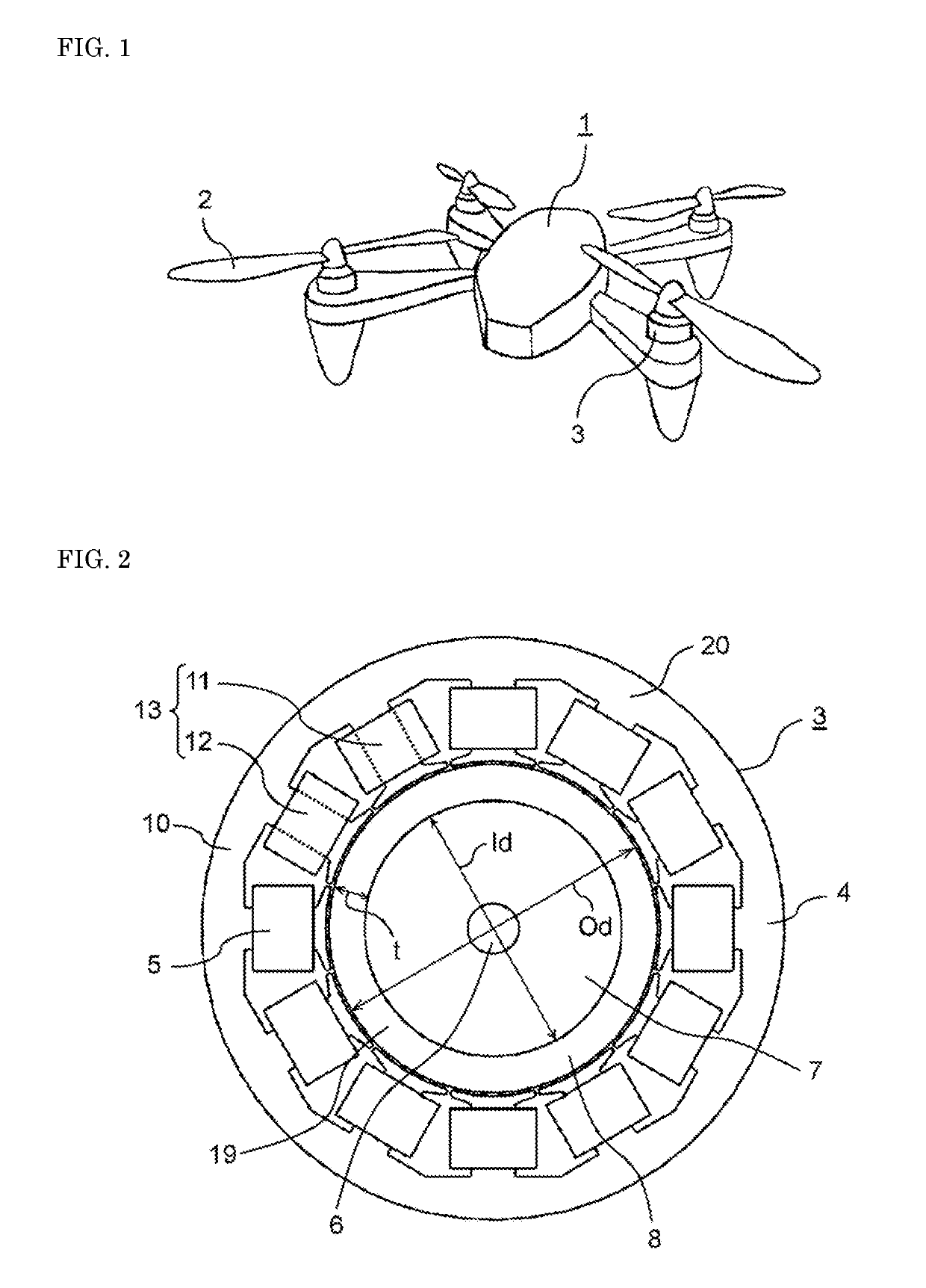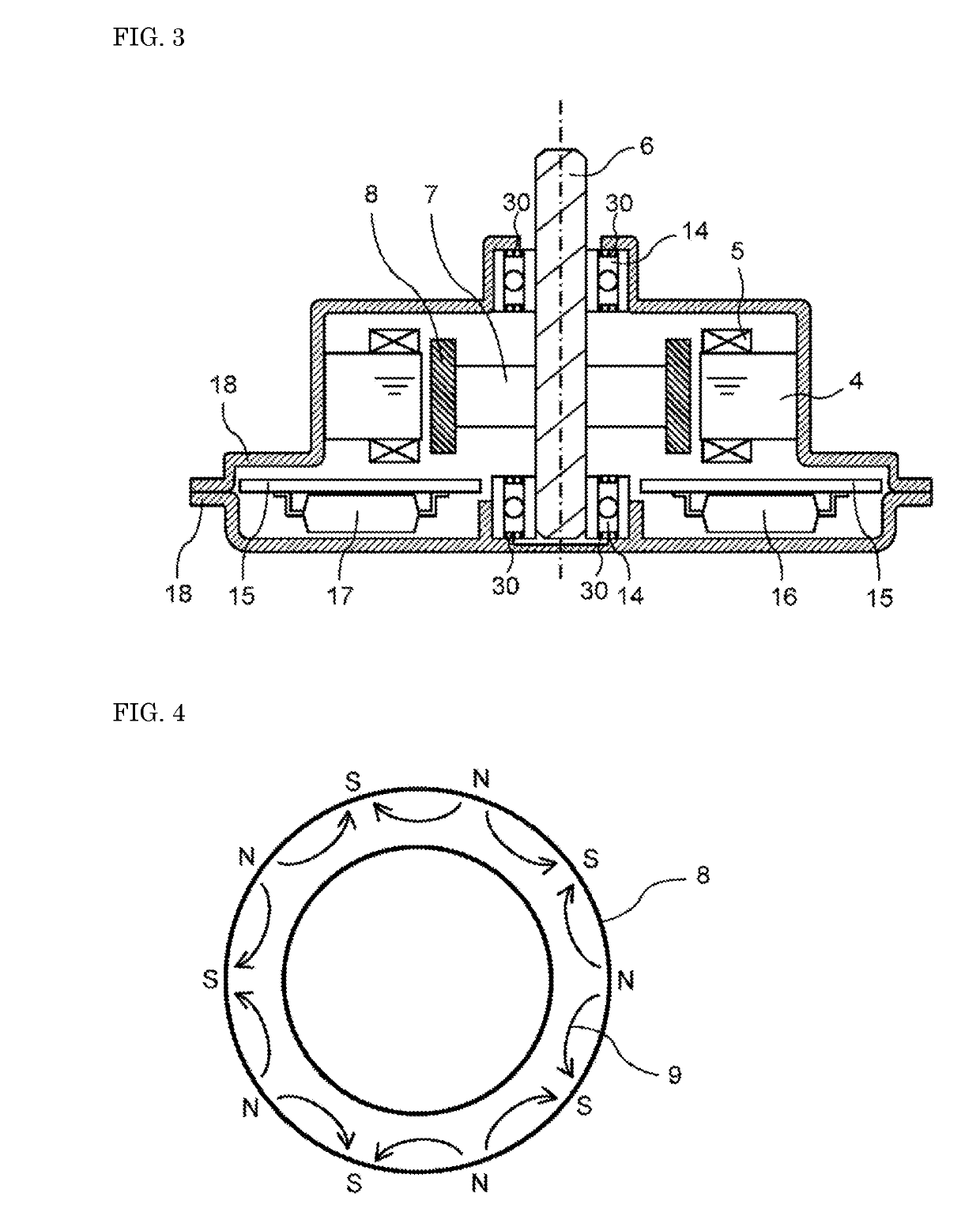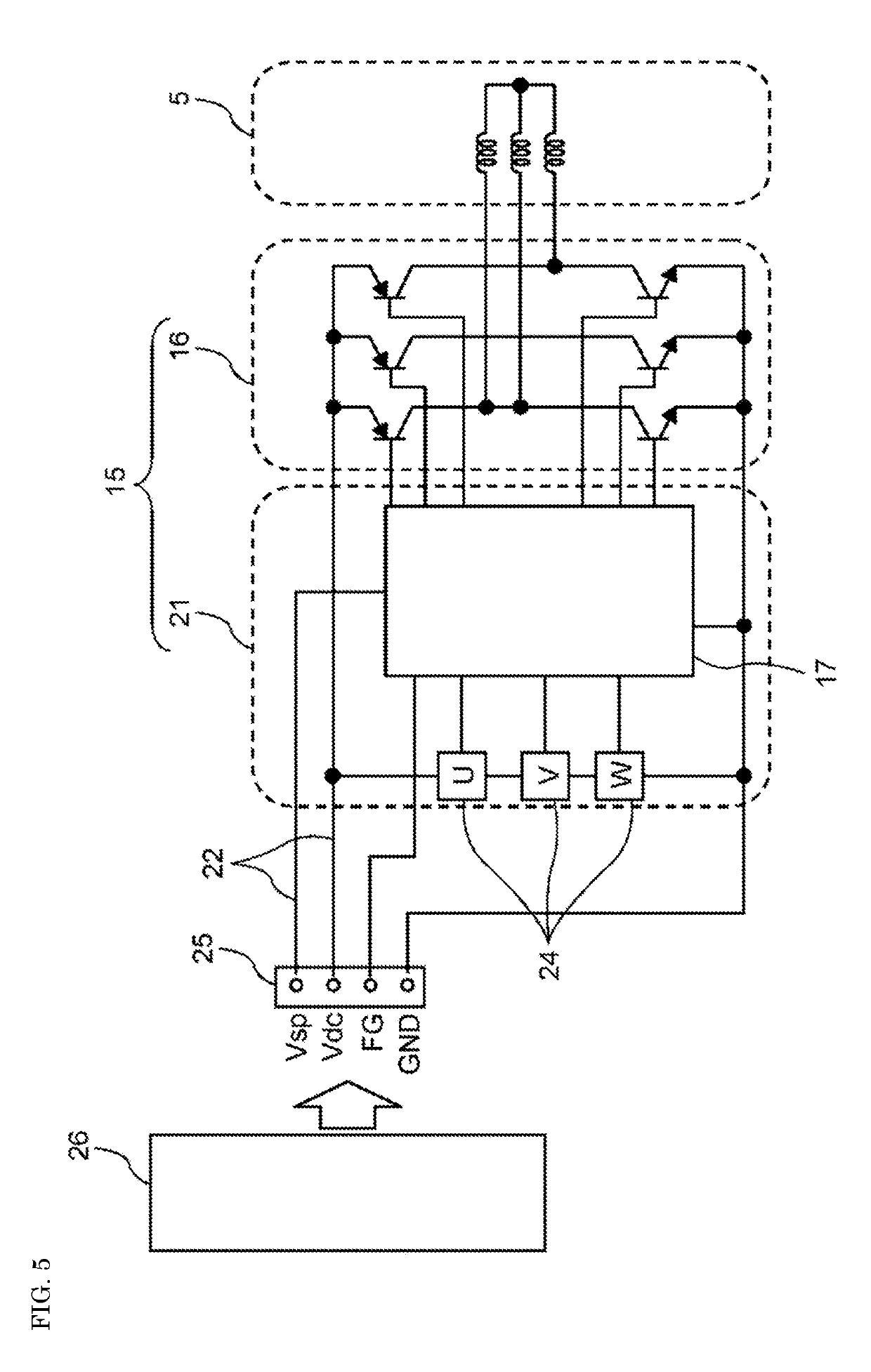Flying device
- Summary
- Abstract
- Description
- Claims
- Application Information
AI Technical Summary
Benefits of technology
Problems solved by technology
Method used
Image
Examples
Embodiment Construction
[0020]An exemplary embodiment of the present invention will hereinafter be described with reference to the drawings. As an example of this exemplary embodiment, a flying device equipped with an inner-rotor-type motor element superior in dust-proofness and reduced in weight will be described. The present invention is not limited by the exemplary embodiment to be described below.
Exemplary Embodiment
[0021]FIG. 1 is an external view of flying device 1 according to an exemplary embodiment of the present invention. Flying device 1 includes motor element 3 serving as a driving source for each of a plurality of rotary vanes 2, and a drive circuit that controls a stator current supplied to stator windings. Flying device 1 further includes a power supply, a control information communication unit, and a load carrying unit. For example, the power supply supplies power to the drive circuit. A secondary battery or a primary battery is used as the power supply.
[0022]FIG. 2 depicts motor element 3 ...
PUM
 Login to View More
Login to View More Abstract
Description
Claims
Application Information
 Login to View More
Login to View More - R&D
- Intellectual Property
- Life Sciences
- Materials
- Tech Scout
- Unparalleled Data Quality
- Higher Quality Content
- 60% Fewer Hallucinations
Browse by: Latest US Patents, China's latest patents, Technical Efficacy Thesaurus, Application Domain, Technology Topic, Popular Technical Reports.
© 2025 PatSnap. All rights reserved.Legal|Privacy policy|Modern Slavery Act Transparency Statement|Sitemap|About US| Contact US: help@patsnap.com



